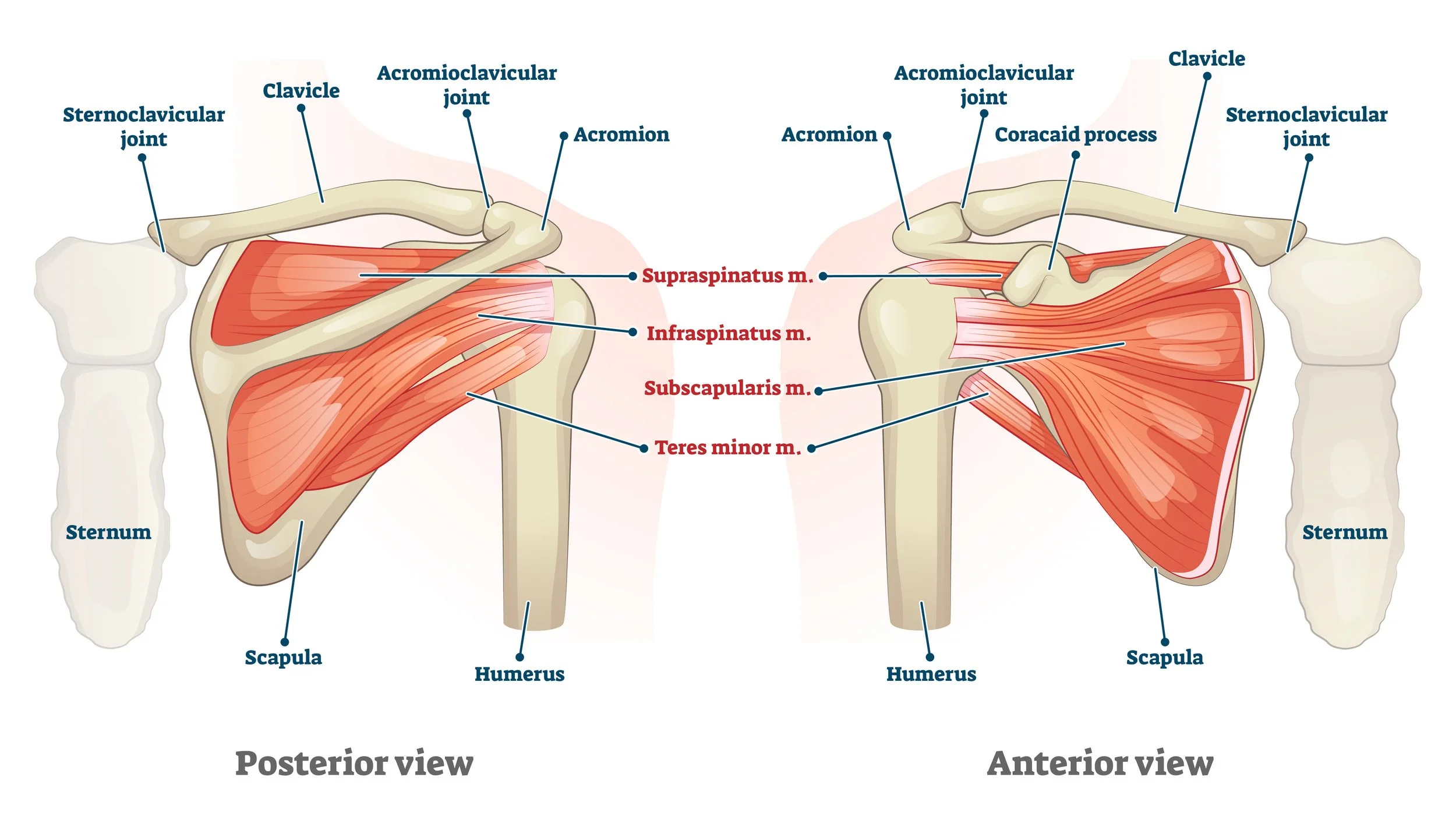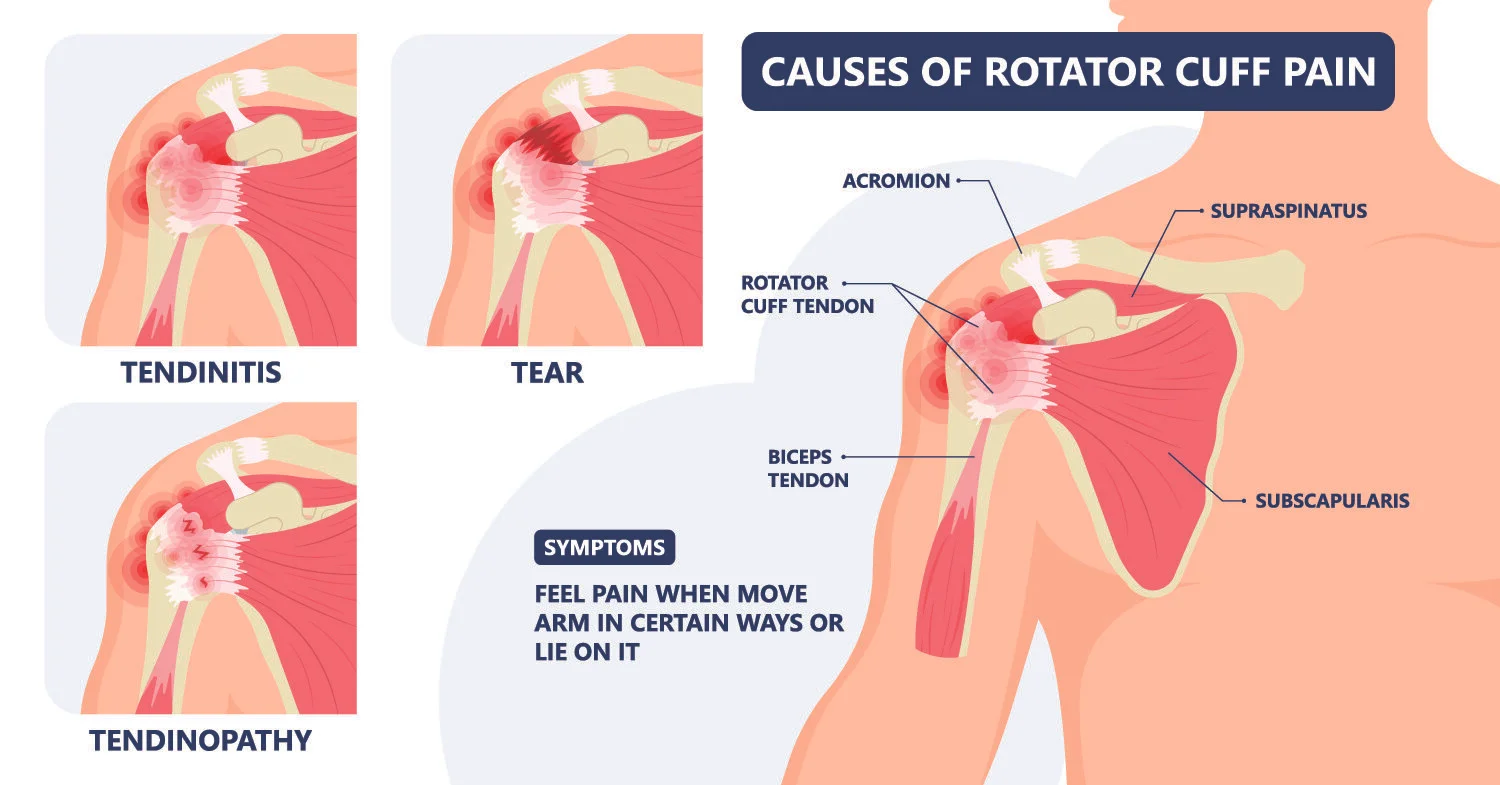What Causes a rotator Cuff injury?
The Mystery of what causes a rotator cuff injury?
Rotator cuff muscles and tendons can be injured over time, or with a sudden injury such as a fall. In an overuse injury, the soft tissues may start to fray, often caused by repeated activities. Rotator cuff tendinopathy is a long-term overuse tendon injury with damage to the tendon occurring at a microscopic level.
Symptoms of rotator cuff tendinopathy can include shoulder pain, stiffness, and weakness. You may have difficulty raising the arm overhead or lifting objects, especially above shoulder height. Getting dressed, washing your hair, or tucking in a shirt may be difficult. Sleeping may be limited because of shoulder pain.
What is the main function of the rotator cuff?
During arm movements, the rotator cuff contracts and prevents the sliding of the head of the humerus, allowing full range of motion, and providing overall joint stability. The rotator cuff also helps in the mobility of the shoulder joint by facilitating abduction (lifting arm to the side), medial or internal rotation (toward the belly), and lateral or external rotation (to the outside).
Rotator cuff tears typically occur at the junction where the tendon attaches to the bone and are can be caused by both extrinsic (outside) and intrinsic (inside) factors. More on Rotator Cuff Tears
More Shoulder Articles & FAQs
What Exercises Are Bad for the Rotator Cuff?
How Can I tell If I Have a Strain or Torn Rotator Cuff?
What Are the Tests for a Rotator Cuff Tear?
Do I need an MRI or MRI Arthrogram for my Shoulder?
What is Wrong With My Shoulder?
What is Rotator Cuff Tendinitis?
Contributing Authors, Collaborators, & Colleagues:
Heidi Biehl, PT, DPT, OCS, CSCS, CFSC
Matt Sato, PT, TPIc, SFMA
Benjamin Wobker, PT, MSPT, CSCS, SFMA
Joe nance, PT, MPT, OCS, COMT, FAAOMPT, ATC
DR. Samuel Koo, MD
DR. Jamie Antoine, MD
Dr. Vincent Santoro, MD
Dr. Camile Clinton, MD
Dr. Bob AdamS, DO
Dr. Christian Peterson, DO
DR. Chris Wahl, MD
Dr. Dayne Mickelson, MD
DR. Tyler Nathe, MD
Dr. Thomas CastLe,MD
Dr. Michael Sailer, MD
Dr. Greg Komenda, MD
References:
Orthopedic Physical Assessment, 4th Edition. David J. Magee, 2006. www.emedicine.medscape.com/article/93095-overview
Kim TK, et al. "Clinical features of the different types of SLAP lesions" Journal of Bone Joint Surgery Am. 2003 Jan;85-A(1):66-71. http://emedicine.medscape.com/article/1261463-overview
Mayo Clinic: Rotator Cuff; https://www.mayoclinic.org/diseases-conditions/rotator-cuff-injury/symptoms-causes/syc-20350225
WebMD: Rotator Cuff; https://www.webmd.com/pain-management/qa/what-causes-rotator-cuff-problems
Disclaimer:
This website is an information and education resource for health professionals and individuals with injuries. It is not intended to be a service for patients and should not be regarded as a source of medical or diagnostic determination, or used as a substitute for professional medical instruction or advice. Not all conditions and treatment modalities are described on this website. Any liability (in negligence or otherwise) arising from any third party acting, or refraining from acting, on any information contained on this website is hereby excluded.




